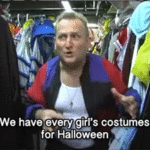If you like Return Of The Jedi but hate the Ewoks, you understand feminist criticism
If you like Return Of The Jedi but hate the Ewoks, you understand feminist criticism
Not only does this article have a brilliant title, it also explains very well the false dychotomy of feminist media criticism.
Notable quotes:
We’ve fallen into an all-or-nothing rut with feminist criticism lately. Battle lines are immediately drawn between movies that are “feminist” (i.e. “good”) and “sexist” (i.e. “bad”). And that simplistic breakdown is hurting our ability to actually talk about this stuff.
Feminist criticism isn’t about ripping something to shreds or making others feel guilty for liking it. It’s simply about pointing out a specific creative weakness and then taking that a step further to explain the real-world social ramifications of that weakness, all in the hopes of dissuading future filmmakers from making the same mistake.
I dedicate this article to every single person who ever implied that by criticizing female character designs, we’re apparently disapproving of the whole product those characters are featured in*.
Cause, again:

~Ozzie
*Sometimes we do, but it takes some special levels of terribad to make us write off the whole product, not only its treatment of female characters.
If you like Return Of The Jedi but hate the Ewoks, you understand feminist criticism
If you like Return Of The Jedi but hate the Ewoks, you understand feminist criticism
Not only does this article have a brilliant title, it also explains very well the false dychotomy of feminist media criticism.
Notable quotes:
We’ve fallen into an all-or-nothing rut with feminist criticism lately. Battle lines are immediately drawn between movies that are “feminist” (i.e. “good”) and “sexist” (i.e. “bad”). And that simplistic breakdown is hurting our ability to actually talk about this stuff.
Feminist criticism isn’t about ripping something to shreds or making others feel guilty for liking it. It’s simply about pointing out a specific creative weakness and then taking that a step further to explain the real-world social ramifications of that weakness, all in the hopes of dissuading future filmmakers from making the same mistake.
I dedicate this article to every single person who ever implied that by criticizing female character designs, we’re apparently disapproving of the whole product those characters are featured in*.
Cause, again:
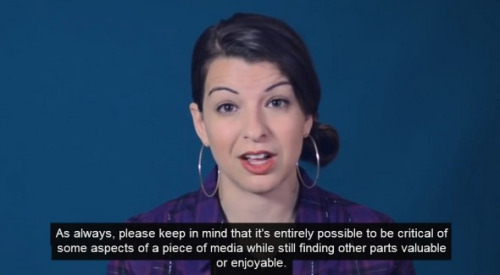
~Ozzie
*Sometimes we do, but it takes some special levels of terribad to make us write off the whole product, not only its treatment of female characters.
Brought to our attention by superheroineworld (thank you so much for linking it in a reblog!)
This video sums up pretty damn well why any sort of “makes sense in context” justification for absurd and creepy things in fiction (like, say, bikini armors) is invalid by default.
Quotes worth highlighting:
Writers routinely alter the rules to suit their interests and the needs of their story. So, in the world outside of the diegesis, in our world, only the implications and impact of that fiction actually matter.
It’s basically a circular argument to expect that the fictional rules created specifically for the narrative will shield the narrative from being criticized on the meta level.
Criticism of a creative work is, ultimately, criticism of the decisions that people made when they were putting it together.
Which is also why “you’re slut-shaming that character" is a fail at responding to criticism. Characters are fictional constructs with no agency and the “choices” they make can be blamed solely on their creators.
You guys might have noticed, but around half of the Female Armor Rhetoric Bingo is made from Thermian arguments. That’s how popular this circular logic is among skimpy armor defenders. And I’m glad we now have this video to explain why it doesn’t work.
~Ozzie
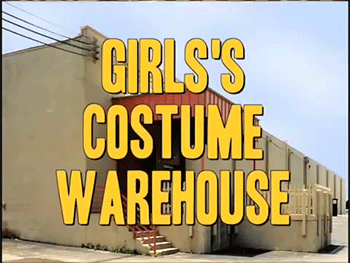



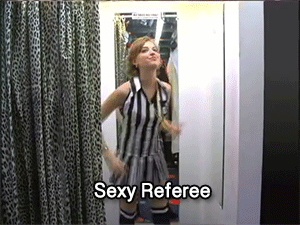



Girl’s Costume Warehouse (X)
ITS BACK
and frog
And don’t forget the warehouse’s special warrior department, presenting:
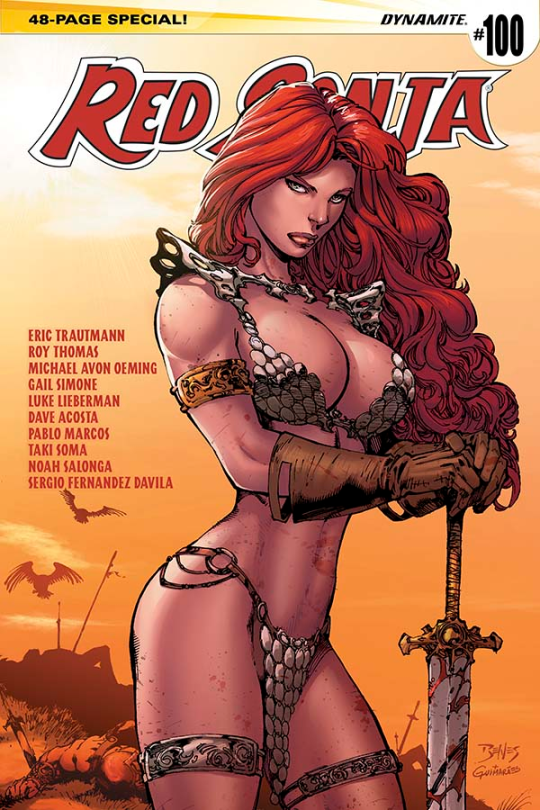
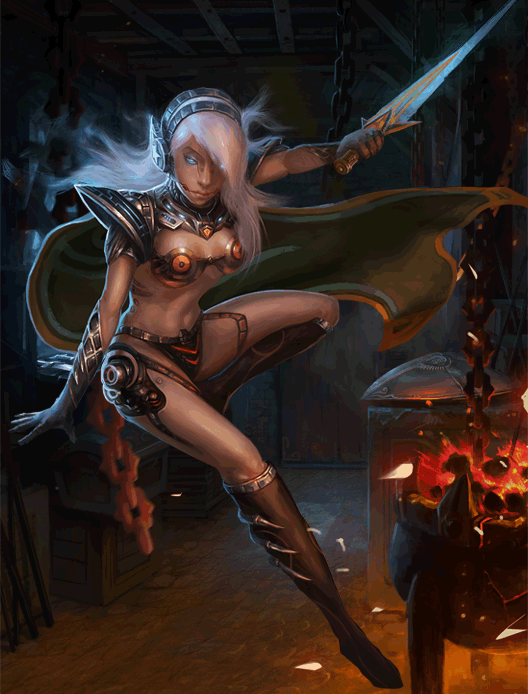
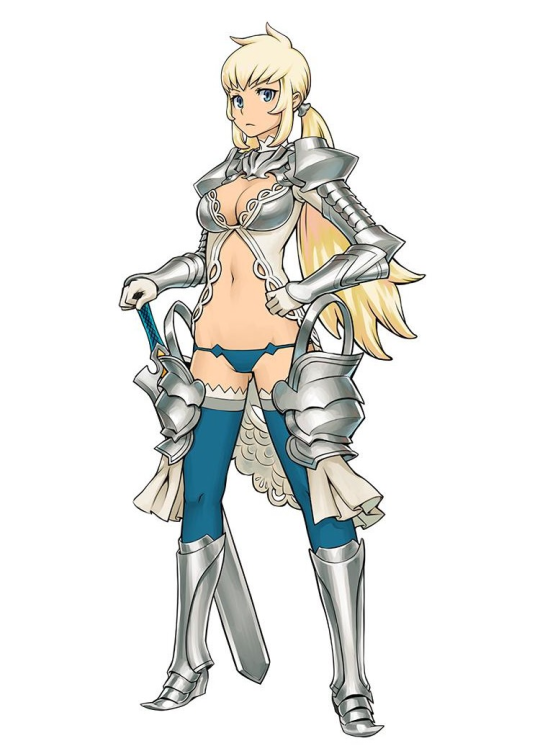
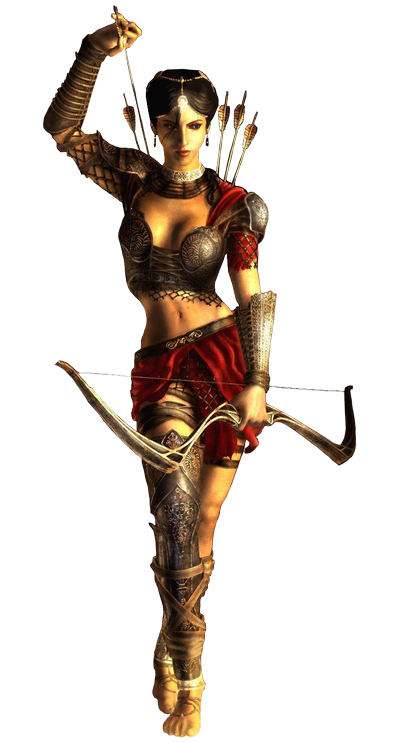
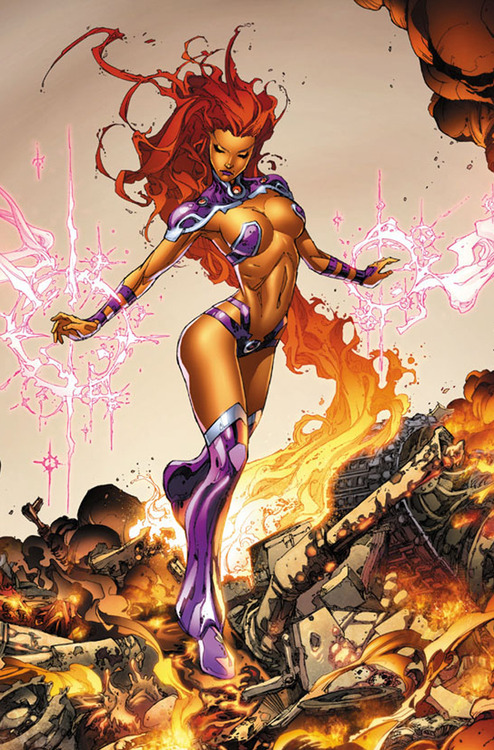
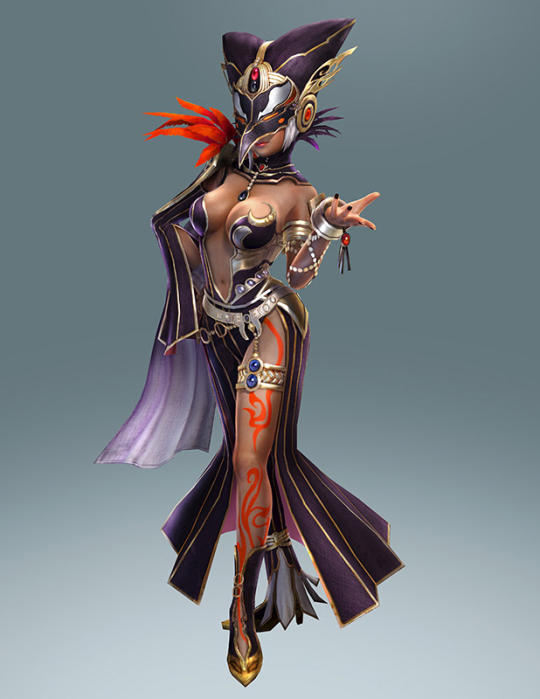
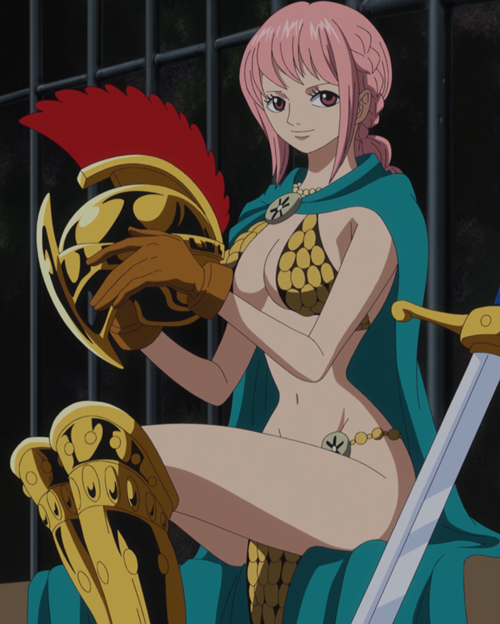


Sexy war nun looking for redemption through death:

The classic, Sexy little girl transformed into a powerful beast:

~Ozzie
And frog:
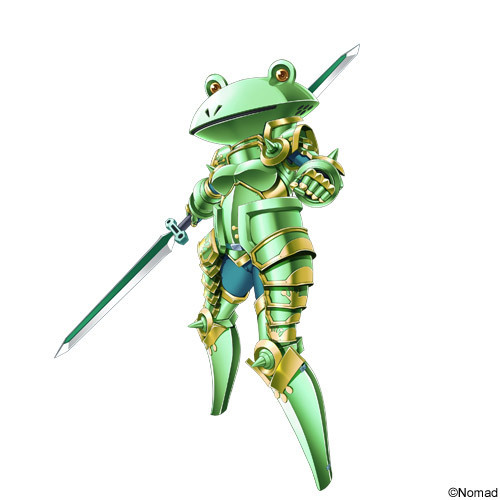
– wincenworks
Rule: When analyzing or critiquing media, you can not defend a problematic aspect of media by saying that a character CHOSE to do it, and that people are allowed to CHOSE to do things.
Because fictional characters do not have the capacity to make choices. Because they are not REAL people.
Power Girl and Starfire did not CHOOSE to fight evil in skimpy, revealing outfits. It is not their PERSONAL CHOICE to wear those clothes. They are fictional characters and their wardrobes are under the control of the author and artist.
Dumbledore did not CHOOSE to stay in the closet as a personal and professional choice because that was his right as a person. He is a fictional character. The fact that his sexuality was left at only vague subtext and only revealed through word of god was a deliberate decision made by the author.
Fictional characters are fictional characters. They do not make their own choices.
Addendum to the rule: for the same reasons, you can not argue that criticism “shames” a character for their appearance or behavior.
And just for the record, seeing what kind of responses this post received before we got to reblog it: NO, the fact that fictional characters tend to grow and take a life of their own still does not mean they have agency.
No matter how developed a fictional person is, they’re still written by a real person (or people) who have their own biases and rationalizations. Just because some “choices” feel natural to the author doesn’t mean they’re objectively plausible “choices” for a character to make within the given narrative.
Sometimes the choice, like (in case of what our blog critiques) decision to wear a sexualized costume to battle, can be explained by specific circumstances. But in most circumstances or with other explanations, the same choice can be plain silly and inconsistent with the rest of established story/worldbuilding.
~Ozzie
But MMA/Wrestlers….
It seems a popular trend in trying to defend terrible costume designs with random pictures of female wrestlers or MMA fighters. Usually accompanied by some sort of rant about how anyone who questions the perfection of these costumes is the sexist one!
Yes, there are many sexualized costumes in women’s sports. It’s not because the costumes are flawless. Rather it is a sign that female athletes often suffer under the tyranny of Creepy Marketing Guy too.
At the end of the day, justifying sexist double standards in the media by pointing to more sexist double standards in the media only showcases how wide spread the problem is.
More under the cut.
– wincenworks
Showmanship vs Sportsmanship
It’s a public secret that WWE isn’t exactly about competing to see who has the greatest combat skills. WWE and those like it are about over the top stunts, fast paced drama and general entertainment.
If we accept that climbing up on a giant prop so that you can taunt your opponent, call for the crowd to cheer and then drop down with a body slam is not serious fighting behaviour, we should be able to accept they are not wearing serious costumes either.
For reference, compare any rebuttal outfit to what Saori Yoshida wore when she took Gold at the 2012 Olympics.
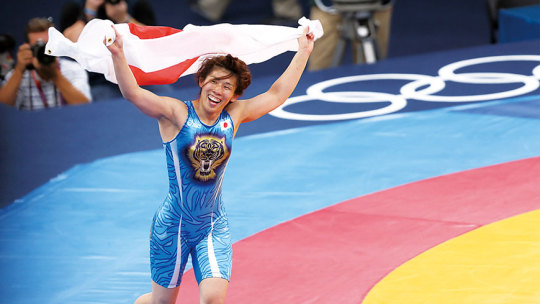
Rules of Engagement
Unsurprisingly in heavily regulated sports that have to adhere to regulations from sponsors, insurance and law enforcement – they have a lot of rules about what you can and can’t do to each other.
Even in more liberal fighting sports such as MMA or Ultimate Fighting, the opponents are not actually trying to kill or permanently injure each other – they’re trying to force a submission through allowed techniques. Certainly you can’t bring claw weapons, throw fireballs, use grappling hooks or rip their head off at the end of the round.
Weight Classes
This is usually more an objection when we talk about body types or lack of muscle, but there’s always no shortage of people rushing to post images of conventionally attractive young women who are professional fighters – thus insisting that all warrior women should conform to these standards.
This overlooks a rather critical aspect of the above rules of engagement – that in order to keep competitions within the many rules fair, fighters are sorted into weight classes. Professional fighters need superb discipline and go to great lengths to balance performance vs weight – because they need to in order to be allowed to fight in their weight class.
Unsurprisingly, height is also and advantage so in many of lighter weight classes the contestants tend to be of slim build and a few invariably fall within the conventional beauty standards.
Sponsorship
The lighter weight classes are particularly important, because for any combat sport event to get big tournaments with professional fighters, promotions, photo shoots, etc they need sponsors. The bigger the sponsors, the bigger the events. WWE’s sponsors include Disney and Mattel. And this is where the tyranny of Creepy Marketing Guy comes in.
Companies sponsor events and fighters in order to boost their image and promote themselves. That means the marketing department gets involved and so does the flawed mentality that sex sells – this effects both the events and the individual fighters.
Now before we continue – I need to stress here that the problem is not the women who benefit from these opportunities and/or enjoy these aspects of the sport. The problem is that the circumstances create additional barriers for women who do not fit or feel comfortable within the constraints.
Journalists and brodudes alike constantly try to justify this focusing on sound bytes or photos of successful female athletes who seem to be okay with it – that’s not fair to the women who dropped out because of these issues or the women who succeed.
The upper limit for the absolute heaviest weight class for women that receives sponsorship for national and international events is 66 kgs or 145 lbs. For men, it’s 120kgs or 265 lbs AND occasionally they experiment with super heavyweight – a division with no upper weight limit at all.
To put this in perspective: Fighter/actress Gina Carano was a champion fighter in the heaviest divisions of Mixed Martial Arts. She tended to weight 140 – 143 pounds during her fight career and once had to publicly strip naked to make her weigh in. This is her with regular sized, just plain actor, Ewan McGregor in Haywire:

This is her generously allowing The Rock to lean on her while he takes a nap:

On top of that, if you want to be a professional fighter you’re going to need a very rigorous training schedule, be able to travel, take time off to heal up after fights, etc. So it’s in your best interests to attract sponsors who will pay you to do all of that.
The downside is, marketing guys will tend to want you to pose for their promotions and fight wearing items of clothing that they pick for you to wear during promo shoots. It also means that marketing guys additional funding options such as interviews, cover shoots, etc tend to want to focus more on “isn’t she sexy!?” rather than “isn’t she a badass!?”
This isn’t just a problem in fighting sports
Back in 2012, weight lifter Sarah Robles lived poverty nearly missed out on going to Olympics because she had no corporate sponsors. Beach Volleyball is regularly controversial because of it’s double standard where women wear bikinis and the men wear shorts and shirts.
There’s a definite trend that if the female athletes for a sport don’t look conventionally sexy while competing it will struggle for coverage and sponsors. The Australian Women’s Olympic Basketball team, who won Silver in 2000, 2004 and 2008, got less sponsorship in 2012 than the Australian Men’s Olympic Basketball Team who have never brought back a medal.
So long as society remains comfortable with this idea that women aren’t worth giving attention to unless they’re sexy, there’s never going to be any shortage of examples like this. That doesn’t make any one example okay.
– wincenworks
But MMA/Wrestlers….
It seems a popular trend in trying to defend terrible costume designs with random pictures of female wrestlers or MMA fighters. Usually accompanied by some sort of rant about how anyone who questions the perfection of these costumes is the sexist one!
Yes, there are many sexualized costumes in women’s sports. It’s not because the costumes are flawless. Rather it is a sign that female athletes often suffer under the tyranny of Creepy Marketing Guy too.
At the end of the day, justifying sexist double standards in the media by pointing to more sexist double standards in the media only showcases how wide spread the problem is.
More under the cut.
– wincenworks
Showmanship vs Sportsmanship
It’s a public secret that WWE isn’t exactly about competing to see who has the greatest combat skills. WWE and those like it are about over the top stunts, fast paced drama and general entertainment.
If we accept that climbing up on a giant prop so that you can taunt your opponent, call for the crowd to cheer and then drop down with a body slam is not serious fighting behaviour, we should be able to accept they are not wearing serious costumes either.
For reference, compare any rebuttal outfit to what Saori Yoshida wore when she took Gold at the 2012 Olympics.

Rules of Engagement
Unsurprisingly in heavily regulated sports that have to adhere to regulations from sponsors, insurance and law enforcement – they have a lot of rules about what you can and can’t do to each other.
Even in more liberal fighting sports such as MMA or Ultimate Fighting, the opponents are not actually trying to kill or permanently injure each other – they’re trying to force a submission through allowed techniques. Certainly you can’t bring claw weapons, throw fireballs, use grappling hooks or rip their head off at the end of the round.
Weight Classes
This is usually more an objection when we talk about body types or lack of muscle, but there’s always no shortage of people rushing to post images of conventionally attractive young women who are professional fighters – thus insisting that all warrior women should conform to these standards.
This overlooks a rather critical aspect of the above rules of engagement – that in order to keep competitions within the many rules fair, fighters are sorted into weight classes. Professional fighters need superb discipline and go to great lengths to balance performance vs weight – because they need to in order to be allowed to fight in their weight class.
Unsurprisingly, height is also and advantage so in many of lighter weight classes the contestants tend to be of slim build and a few invariably fall within the conventional beauty standards.
Sponsorship
The lighter weight classes are particularly important, because for any combat sport event to get big tournaments with professional fighters, promotions, photo shoots, etc they need sponsors. The bigger the sponsors, the bigger the events. WWE’s sponsors include Disney and Mattel. And this is where the tyranny of Creepy Marketing Guy comes in.
Companies sponsor events and fighters in order to boost their image and promote themselves. That means the marketing department gets involved and so does the flawed mentality that sex sells – this effects both the events and the individual fighters.
Now before we continue – I need to stress here that the problem is not the women who benefit from these opportunities and/or enjoy these aspects of the sport. The problem is that the circumstances create additional barriers for women who do not fit or feel comfortable within the constraints.
Journalists and brodudes alike constantly try to justify this focusing on sound bytes or photos of successful female athletes who seem to be okay with it – that’s not fair to the women who dropped out because of these issues or the women who succeed.
The upper limit for the absolute heaviest weight class for women that receives sponsorship for national and international events is 66 kgs or 145 lbs. For men, it’s 120kgs or 265 lbs AND occasionally they experiment with super heavyweight – a division with no upper weight limit at all.
To put this in perspective: Fighter/actress Gina Carano was a champion fighter in the heaviest divisions of Mixed Martial Arts. She tended to weight 140 – 143 pounds during her fight career and once had to publicly strip naked to make her weigh in. This is her with regular sized, just plain actor, Ewan McGregor in Haywire:

This is her generously allowing The Rock to lean on her while he takes a nap:
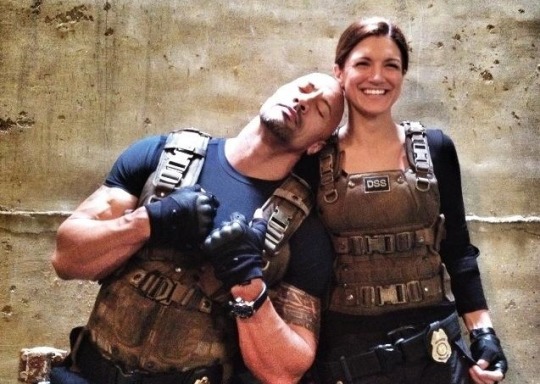
On top of that, if you want to be a professional fighter you’re going to need a very rigorous training schedule, be able to travel, take time off to heal up after fights, etc. So it’s in your best interests to attract sponsors who will pay you to do all of that.
The downside is, marketing guys will tend to want you to pose for their promotions and fight wearing items of clothing that they pick for you to wear during promo shoots. It also means that marketing guys additional funding options such as interviews, cover shoots, etc tend to want to focus more on “isn’t she sexy!?” rather than “isn’t she a badass!?”
This isn’t just a problem in fighting sports
Back in 2012, weight lifter Sarah Robles lived poverty nearly missed out on going to Olympics because she had no corporate sponsors. Beach Volleyball is regularly controversial because of it’s double standard where women wear bikinis and the men wear shorts and shirts.
There’s a definite trend that if the female athletes for a sport don’t look conventionally sexy while competing it will struggle for coverage and sponsors. The Australian Women’s Olympic Basketball team, who won Silver in 2000, 2004 and 2008, got less sponsorship in 2012 than the Australian Men’s Olympic Basketball Team who have never brought back a medal.
So long as society remains comfortable with this idea that women aren’t worth giving attention to unless they’re sexy, there’s never going to be any shortage of examples like this. That doesn’t make any one example okay.
– wincenworks

